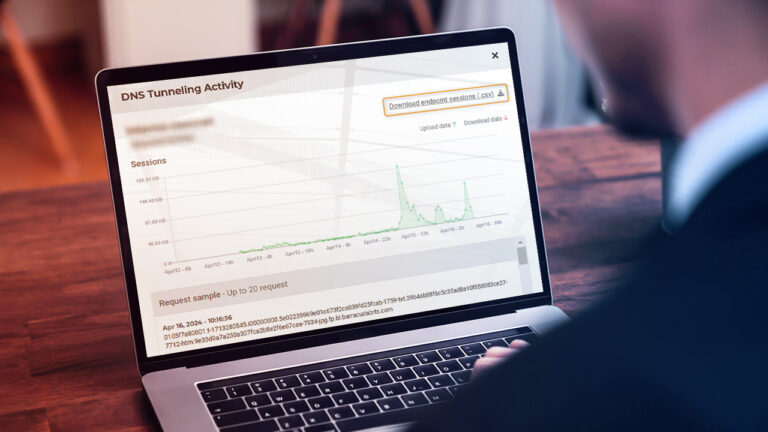Table of Contents
Collective Defense is a collaborative approach that brings together multiple organizations to strengthen their cybersecurity posture and protect against sophisticated threats. This collaborative approach can also extend to the development and maintenance of Machine Learning models, allowing organizations to leverage the power of both fields to enhance cybersecurity defense. In this blog post, we will explore the concept of Collective Defense in AI, discussing its significance and the benefits it can provide. Join us as we delve into Collective Defense in AI, uncovering its potential to bolster cybersecurity defenses and mitigate emerging threats.
What Is Collective Defense? And How Is It Related to Artificial Intelligence?
Collective Defense is a collaborative approach to cybersecurity that brings together multiple organizations, pooling their resources and expertise to fortify their collective security posture. It recognizes the inherent limitations of any single entity’s ability to withstand sophisticated cyber threats in isolation, thereby emphasizing the criticality of sharing vital threat intelligence, industry-leading best practices, and coordinated response strategies.
In Artificial Intelligence (AI), the application of Collective Defense takes on an even more profound significance. As organizations venture into AI-powered systems and technologies, the need for collaboration becomes paramount. By exchanging data and insights, organizations can unlock the potential for developing machine learning models of heightened complexity and resilience, specifically tailored to counteract the multifaceted challenges posed by cybersecurity attacks. This symbiotic cooperation fosters an ecosystem of shared knowledge and resources, enabling the creation of AI defenses that are more comprehensive, adaptive, and effective.
The collaborative efforts facilitated by Collective Defense establish a solid foundation for combating the ever-evolving threats prevalent in the AI environment. The collective intelligence harnessed from such collaborations enhances the capacity to detect anomalies, identify potential vulnerabilities, and swiftly respond to novel cyber threats, ultimately reducing the overall risk landscape in the AI domain. Furthermore, Collective Defense in the context of AI cybersecurity promotes continuous learning and evolution. The iterative feedback loop established through ongoing collaboration enables organizations to refine their defense mechanisms, constantly adapting to new attack techniques and trends. This dynamic process ensures that the Collective Defense framework remains up-to-date and capable of addressing emerging threats in a timely and effective manner.
Why Is It Crucial to Enhance Cybersecurity Practices?
In the ever-evolving cybersecurity landscape, attackers collaborate to exchange information about existing security vulnerabilities in online platforms. They leverage this shared knowledge to enhance their success rate in carrying out cyber attacks. Consequently, organizations need to adopt a collaborative approach and acknowledge that there are recurring patterns that attackers employ across multiple attempts. By fostering collective knowledge and understanding of these attack patterns, organizations can swiftly and effectively identify and block malicious activities. This collaborative effort benefits all parties involved, as it promotes a stronger defense against cyber threats.
Moreover, various third-party entities recognize the importance of consolidating and analyzing this collective knowledge. They willingly gather and analyze data from diverse sources to discern commonalities and devise generalized defensive models. By centralizing and processing this information, these entities aim to develop comprehensive and proactive defense mechanisms that can be shared across organizations. This collaboration amplifies the effectiveness of individual cybersecurity efforts and contributes to the overall security of the digital ecosystem.
Benefits of Adopting Collective Defense Practices in the Cybersecurity Industry
We have discussed the importance of Collective Defense as a key methodology for enhancing cybersecurity practices. Now, let’s explore some specific benefits that can be achieved through its adoption:
- Enhanced Threat Detection: Collective Defense practices use shared threat intelligence and AI algorithms to identify emerging cyber threats. Analyzing large datasets with machine learning uncovers hidden patterns or anomalies indicating potential attacks, such as advanced malware or targeted phishing campaigns.
- Rapid Incident Response: Collective Defense enables swift response to cyber incidents through real-time data sharing. AI-driven automation and analysis expedite detection, containment, and mitigation. AI-based threat intelligence platforms automatically analyze security alerts from multiple sources, prioritizing critical incidents for prompt action.
- Improved Resilience: Sharing data and intelligence strengthens overall resilience against cyber threats. Collective Defense, coupled with AI-powered anomaly detection, helps anticipate security breaches by analyzing network traffic, user behavior, and system deviations.
- Knowledge and Best Practices Sharing: Adopting Collective Defense fosters a community-driven environment for knowledge exchange and learning. Sharing insights and utilizing AI-driven data analysis keeps organizations ahead of evolving threats. Information on new attack techniques, indicators of compromise, and effective security controls are shared, enabling proactive adjustments to defenses.
- Cost Efficiency and Resource Optimization: Collaboration and resource sharing lead to cost efficiency. Pooling expertise and technology reduces costs, maximizes resources, and enables joint investment in AI-based security solutions. This optimization allows effective allocation of cybersecurity budgets and access to advanced tools that may be financially challenging to obtain individually.
Real-world Applications
As we described before, Collective Defense plays a crucial role in cybersecurity. In fact, leading government institutions establish specialized organizations that foster collaboration and information sharing between countries. One such prominent example is NATO, where member states join forces to defend against cyber threats collectively. Another intelligence alliance is the Five Eyes, comprising the United States, United Kingdom, Canada, Australia, and New Zealand, which operates as a cooperative intelligence-sharing alliance to bolster collective defense efforts. And finally, the European Union’s mutual defense clause serves as a crucial framework, mandating member states to offer aid and military support to one another in the event of an attack. These organizations and agreements signify the recognition of the significance of Collective Defense in combating cyber attacks, enabling the effective exchange of information and collaboration among nations to enhance overall cybersecurity resilience.
Additionally, Collective Defense holds significant importance not only in government institutions but also in private organizations that seek to enhance cybersecurity. Many private entities recognize the power of collaboration and information sharing to combat cyber threats effectively. For instance, the Cyber Threat Alliance (CTA) brings together cybersecurity companies to share intelligence, collaborate on threat analysis, and develop proactive defenses against emerging cyber threats. Another example is the Financial Services Information Sharing and Analysis Center (FS-ISAC), which facilitates information sharing and collaboration among financial institutions to protect against cyber threats targeting the financial sector.
These organizations and agreements acknowledge the importance of Collective Defense in the fight against cyber attacks, enabling the pooling of resources, expertise, and threat intelligence, fostering a more comprehensive and robust defense against evolving threats. By leveraging Collective Defense, private organizations reinforce their cybersecurity posture and contribute to the broader security landscape in an interconnected digital world.
In conclusion, embracing the principles of Collective Defense empowers organizations to transcend individual limitations and build a united front against cyber threats in the AI landscape. By leveraging the power of collaboration, shared knowledge, and coordinated action, Collective Defense propels the advancement of cybersecurity practices, bolstering the resilience and integrity of AI systems and technologies.
In the following post, we will delve into the practices that Lumu employs with machine learning models and Collective Defense to enhance security for its clients.




